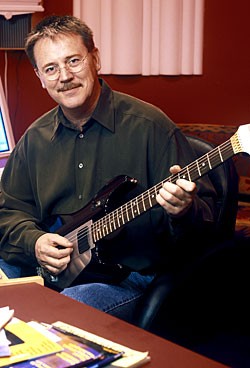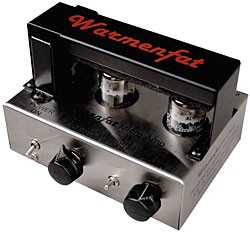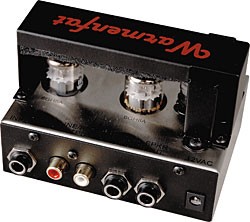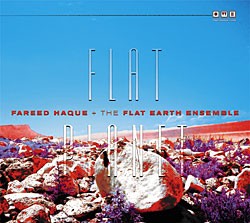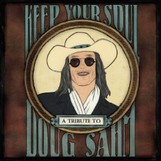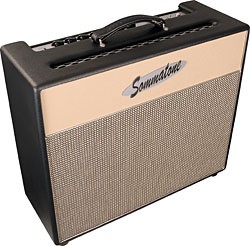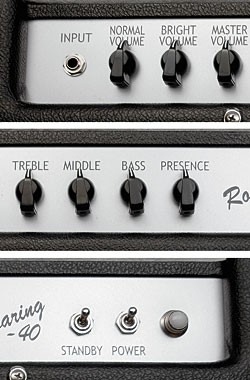
Photo: Kelsey Vaughn. Instrument courtesy Jason Davis.
Grammer guitars, made in Nashville in the ’60s, are easily recognizable by their oversized pegheads, pickguards and bridges – not to mention the typical blue, yellow, or green sunburst finishes – and they seem a perfect complement for the gaudy stage clothing worn by country artists of the era.
However, underneath the cosmetic excesses was a serious guitar. Moreover, the Grammer name transcended country music, and it was the only guitar of the era (with the arguable exception of Sho-Bud pedal steels) named after – and designed by – a bona fide star guitarist.
Billy Grammer was born in southern Illinois in 1925. After serving in the Army during World War II, he worked as an apprentice toolmaker at the Washington Naval gun factory, acquiring skills that he would later put to good use designing guitar-production equipment. He began playing professionally in 1947, when legendary country music promoter Connie B. Gay hired him at WARL in Arlington, Virginia. Through the early ’50s, he backed up such country artists as Hawkshaw Hawkins, T. Texas Tyler, Clyde Moody and Grandpa Jones. His career took a giant step up in 1955, when he replaced the chronically tardy Roy Clark on WARL’s “Town and Country Time.” Hosted by Jimmy Dean (who would later have the pop hit “Big John”), the show was aired nationally on CBS.
Dean moved up the ladder to network TV in New York in ’58, leaving Grammer wondering where his own career was heading. He didn’t have to wonder for long. In nearby Baltimore, record promoter Fred Foster quit his job at ABC Paramount to start a new record label called Monument, and he asked Grammer to be Monument’s first artist.
Foster had found a song on a Library of Congress recording called “Gotta Travel On.” As Grammer recalled, “It was an old lady from North Carolina with a plectrum banjo, no tempo or nothing, sounded like it was 10 minutes long.” The singer was one Mary Bird McAllister, and the field recording was made by folksinger Paul Clayton, who developed the song with Pete Seeger and others into a version that the Weavers folk group recorded. Grammer started working it into a commercial tune, using his home tape recorder. “On one cut, I started it, and it was a little too low,” he said. “And right as I decided it was too low, I modulated up. It was still too low, so I modulated again.”
Foster brought Grammer to Nashville to cut the tune with an A-team session group that included Chet Atkins, Ray Edenton (rhythm guitar), Floyd Cramer (piano), Bob Moore (bass) and Buddy Harman (drums), plus members of the Jordanaires and the Anita Kerr Singers providing sing-along background vocals. Atkins played a signature opening lick on his low-E string, along with a bouncy electric guitar rhythm part. The key changes from Grammer’s home tape made it into the final production.
The timing could not have been better. For all practical purposes, the folk boom had begun in September, 1958, when the Kingston Trio released “Tom Dooley.” Two months later, Monument released “Gotta Travel On” by Billy Grammer. Although the song would become a folk staple, Grammer gave it a pop treatment, and it became an across-the-board hit, peaking at #4 on the pop charts, #5 on the country charts and #14 on the black singles charts. Grammer moved to Nashville, joined the Grand Ole Opry, and embarked on a successful solo career.
In 1964, with demand growing for acoustic guitars, Grammer decided to make his own. He put up $18,000 for a controlling interest and teamed up with Nashville music store owner Clyde Reid and Nashville guitar builder J.W. Gower to form the RG&G guitar company. To unlock the secrets of fine guitars, Grammer took his personal Martin D-18 and Gibson J-45 and sawed them in half so they could be inspected inside and out.
Grammer settled on a dreadnought body style, 151/2″ wide, with a 241/2″ scale. Necks would be available in three widths. Although labels had a blank space for a model number, there were none. With the help of Fred Hedges, Grammer drew up the design features and also designed the production equipment. The first Grammer guitar didn’t meet Grammer’s standards, so he sawed it up. Finally, in March, 1965, the first Grammer guitar made it past Grammer’s quality control saw, with a wholesale price of $127 and list of $395.
Serial numbers started at 1000, and in the three years Billy Grammer ran the company, they did not reach 2000. This month’s feature is #1264, which places it in the company’s first year. The wide points on the lower corners of the peghead also identify an early example. It has maple back and sides (Brazilian rosewood and ribbon-grain mahogany were also offered). The two vertical lines of inlay on the fingerboard became one of Grammer’s signature features.
Grammer’s recording success proved a double-edged sword, as it left little time for the problems facing his company – particularly the difficulty of getting good materials. So, in ’68, he sold the company to Ampeg. The contract included a royalty on every guitar and a reversion clause in the event Ampeg stopped building Grammers.
With Ampeg’s ownership, the G in the Grammer logo was changed from upper-case to lower-case. And that wasn’t the only aspect that went “down.” Although Ampeg was in good financial shape, the needed money and materials never made it to the Grammer factory in Nashville. In the meantime, the company began giving away Grammer guitars – something Billy had never done, not even to fellow recording artists.
According to an account by Rob Kilgore, a man named Ralph Fielding (who was unknown to Grammer) acquired Grammer from Ampeg in 1971 and promptly lost it when he defaulted on a construction loan. Steel-guitarist Roy Wiggins, who had been instrumental in bringing Grammer and Ampeg together, then acquired control, but was unable to revive Grammer. In ’72, the equipment, materials, and the lease on the building were auctioned to pay business taxes. Resonator guitarmaker Tut Taylor and his son, Mark, bought everything except the Grammer name. Billy Grammer died in August of 2011, at age 85.
This article originally appeared in VG‘s August 2008 issue. All copyrights are by the author and Vintage Guitar magazine. Unauthorized replication or use is strictly prohibited.



